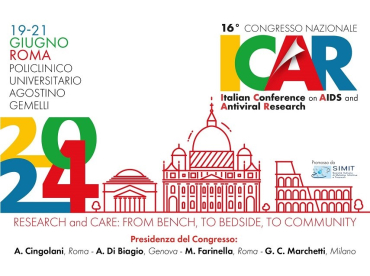Welcome to Prestigio Registry platform
Abstract from ICAR 2024 - Thu Jun 20 2024

Network analysis of proviral DNA mutations in People with 4-class-resistant HIV-1: Data from the PRESTIGIO Registry
Background: In highly treatment-experienced people with HIV (PWH) mutations interact within a complex system. To date, network-based approach has not been used to study HIV mutations. This study aims to identify communities of mutations archived in proviral DNA in PWH with 4-class drug resistance (PWH-4DR) under virological suppression.
Methods: HIV-1 DNA next-generation sequencing (Illumina MiSeq) was performed with a 5% cutoff; we included major mutations (based on Stanford HIV Drug Resistance Database) detected in suppressed individuals from the PRESTIGIO Registry. A correlation network was constructed by calculating Spearman coefficients between each pair of mutations (nodes). Weighted edges represent significant correlations (adjusted Benjamini-Hochberg p<0.001) with thresholds set at the 5th and 95th percentiles for negative and positive values, respectively. The analysis was repeated including other mutations (accessory and polymorphisms non-resistance related) detected in ≥10% of study population.
Results: Overall 91 PWH-4DR, maintaining HIV-RNA<50 cps/mL for a median of 3.2 (IQR=1.7-5.0) years, included: at sampling 70 (77%) males, median (IQR) age 54 (50-59) years, on ART for 23 (21-25) years, on the current ART regimen for 2.6 (1.5-3.6) years and CD4+ 655 (484-890) cells/mm3. Out of 1226 mutations detected, 71 majors [25 for protease inhibitors (PI), 13 for nucleoside reverse transcriptase inhibitors (NRTI), 18 for non-nucleoside reverse transcriptase inhibitors (NNRTI), 15 for integrase strand transfer inhibitors (INSTI)] were selected for the above criteria. Network analysis revealed 3 connected components that are biologically relevant (Figure 1). The largest one (Figure 1, A-component) is characterized by 2 distinct communities, connected by a negative correlation among thymidine analog mutations (TAMs), indicating mutually exclusive mutation patterns; type 2 TAMs are associated with a cluster of PI major mutations, while type 1 are linked to L90M for PIs and Y188L for NNRTIs. The B component in Figure 1 is characterized by a pattern of INSTI major mutations, where Q148K is the connector node between 3 groups, composed of NNRTI and major mutations from other drug classes. The second analysis including all mutations (71 majors, 125 minors, 6 stop codons) confirms the structure of these components (Figure 2: A-, B-, C-component), suggesting that not only major mutations may play a role in generating the network. Regarding potentially defective reservoir in proviral DNA, the C-component in Figure 2 presents a cluster of stop codons associated with APOBEC-related context drug resistance mutations.
Conclusions: In PWH-4DR network analysis allows the identification of distinct clusters of major mutations across different drug classes; it also highlights the direction and strength of the association between them. This innovative approach may outline the complex system of relations between proviral DNA mutations.


